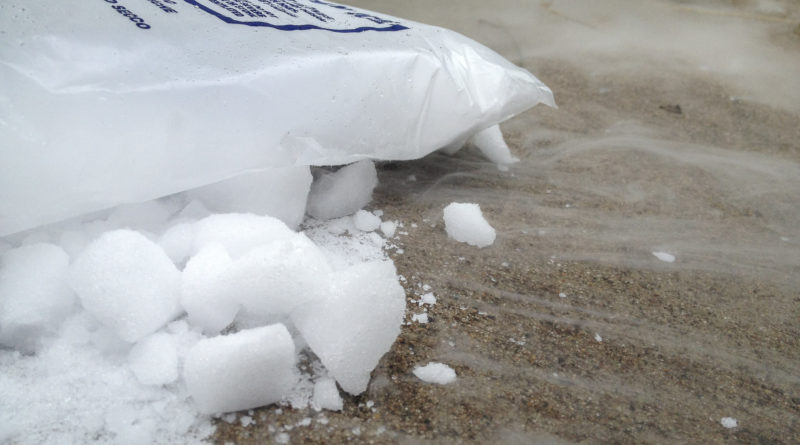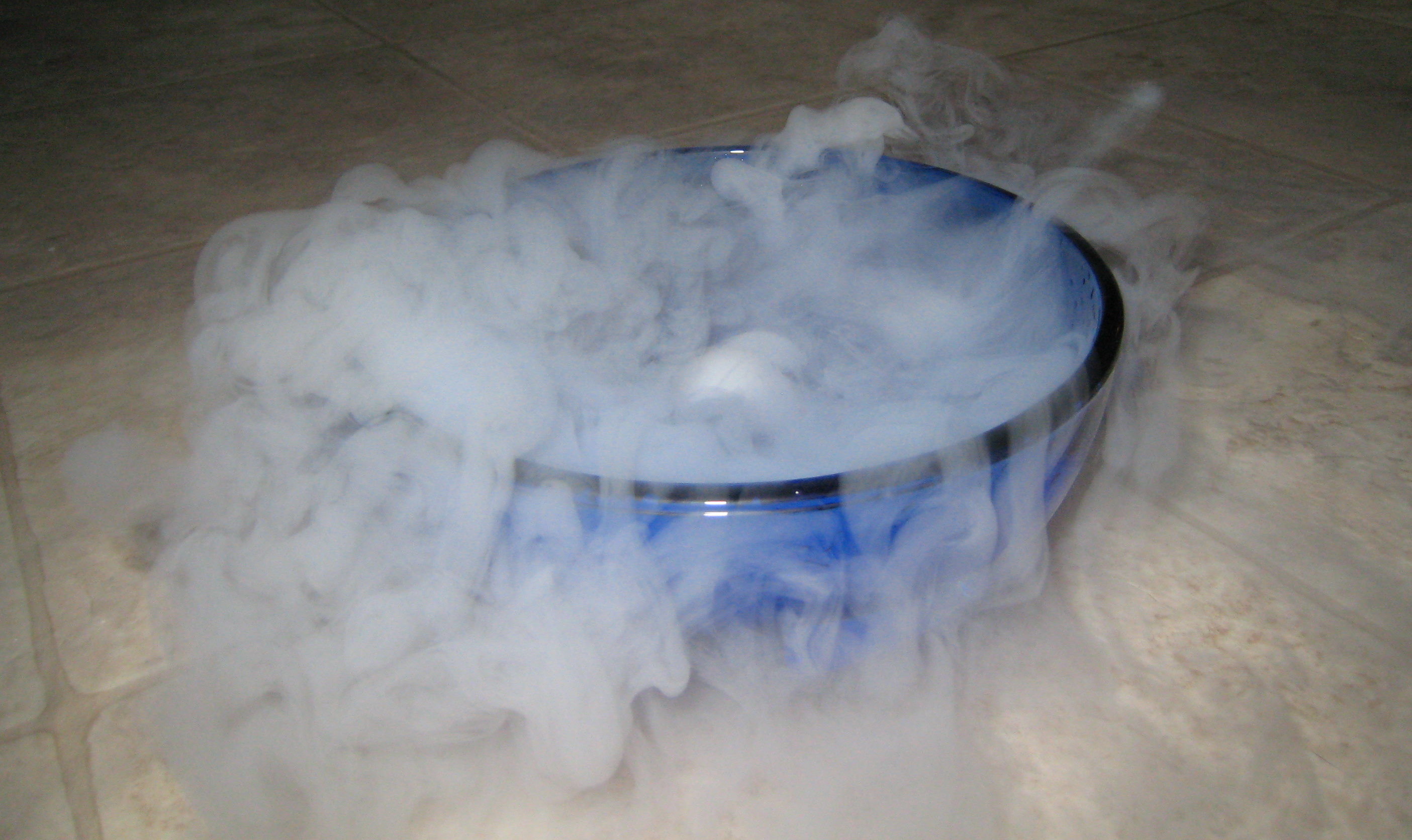How to Dispose of Dry Ice Safely in the UK
Dry ice, a solid form of carbon dioxide, is a versatile tool used in various applications, from preserving perishables to creating theatrical fog. While its uses are diverse, it’s essential to handle and dispose of dry ice safely, especially given its extremely cold temperature and potential hazards. In the UK, specific guidelines ensure the safe management of this substance. This article will guide you through the correct and environmentally friendly methods to safely dispose of dry ice, ensuring safety for both individuals and the environment.
- Why it’s crucial: Improper disposal can lead to burns, pressure build-up in sealed containers, and other risks.
Stay with us as we delve into the step-by-step process, ensuring you’re well-equipped to handle dry ice safely.
Understanding Dry Ice
Dry ice is frozen carbon dioxide (CO2). Unlike typical ice made from water, dry ice doesn’t melt into a liquid but sublimates, turning directly from a solid to carbon dioxide vapor. This unique property is where its name “dry” ice originates. With a temperature of approximately -78.5°C (-109.3°F), it’s much colder than regular ice, making it essential to handle with care to avoid frostbite or cold burns.
Common Uses in the UK:
- Food Preservation: Due to its extremely cold temperature, dry ice is commonly used to keep perishable items, like meats and dairy, fresh during transport or storage.
- Medical Applications: Hospitals and medical labs utilise dry ice to store and transport biological samples, vaccines, and other temperature-sensitive materials.
- Entertainment: The entertainment industry often uses dry ice to create fog or smoke effects in theatres, concerts, and film productions.
- Cleaning: Known as “dry ice blasting”, it’s an effective method for cleaning surfaces without using chemicals or water, popular in industrial settings.
- Education: Schools and universities might use dry ice in scientific demonstrations to showcase its sublimation and other properties.
Why Safe Disposal is Important
Understanding the importance of safely disposing of dry ice is paramount, especially when considering the potential risks and environmental implications it presents.
Potential Hazards of Dry Ice:
- Burns and Injuries: Direct contact with dry ice can lead to severe frostbite or burns. Its extreme cold temperature can harm the skin within seconds.
- Carbon Dioxide Buildup: As dry ice sublimates, it releases carbon dioxide. In enclosed spaces, this can lead to a dangerous buildup, posing risks of suffocation and respiratory issues.
- Explosive Situations: When confined, the gas from sublimating dry ice can cause containers to burst, leading to potential injuries.
Environmental Considerations Specific to the UK:
- Waste Management: Improper disposal can strain the UK’s waste management systems, especially if dry ice is discarded in regular bins.
- Air Quality: While carbon dioxide is a natural component of our atmosphere, excessive release in concentrated areas can impact local air quality.
- Water Systems: Dumping dry ice in drains or water systems can lead to pipe damage and disrupt local water treatment processes.
Step-by-Step Guide to Disposing of Dry Ice Safely
Navigating the process of dry ice disposal can be daunting. However, with the right steps and precautions, it can be both simple and safe. Here’s a comprehensive guide to ensure you handle dry ice correctly:
Preparation:
- Protective Gear: Before handling dry ice, always:
- Wear insulated gloves to prevent frostbite.
- Use safety goggles to shield your eyes from potential splashes or direct contact.
- Ventilation: Choose a location that’s airy and open. This ensures that as the dry ice sublimates, the carbon dioxide released disperses safely.
Disposal Methods:
- Natural Sublimation:
- Place the dry ice in a well-ventilated area.
- Allow it to naturally turn into gas over time.
- Warm Water Technique:
- Fill a large container with warm or hot water.
- Gently place the dry ice into the water. This accelerates the sublimation process, turning the solid ice into gas more rapidly.
- Break It Down:
- Using a hammer or similar tool (while wearing protective gear), break the dry ice into smaller chunks.
- Smaller pieces sublimate faster, speeding up the disposal process.
Places to Avoid:
- Sinks and Toilets: Don’t dump dry ice in the toilet or push it down drains. The extreme cold can freeze pipes, leading to potential cracks and damage.
- Enclosed Spaces: Never leave dry ice in confined areas, like cars or small rooms, without ventilation. The carbon dioxide released can accumulate, posing serious health risks.
Storing Dry Ice
1. Suitable Storage Containers:
- Styrofoam Chest: Provides insulation to slow down the sublimation of dry ice.
- Insulated Cooler: Another option for temporary storage.
- Special Dry Ice Cooler: Specifically designed for prolonged storage of dry ice.
2. Location Matters:
- Ventilation is Key: Always store dry ice in well-ventilated areas, such as open labs.
- Avoid Enclosed Spaces: Never place dry ice storage containers in closets, cabinets, refrigerators, or walk-in coolers/cold rooms.
3. Risks of Sealed Storage:
- Explosive Potential: Dry ice undergoes thermal expansion. A pound of dry ice can produce approximately 250 liters of gaseous carbon dioxide. This rapid gas production in a sealed environment can lead to explosions.
- Avoid Tightly Sealed Devices: Never store dry ice in ultra-low freezers or in sealed plastic/glass containers.
4. Sublimation Rate:
- Dry ice will naturally turn from solid to gas over time. In a typical storage cooler, expect a loss of five to ten pounds every 24 hours. Note that blocks of dry ice tend to last longer than pellets.
- Purchase Timing: To minimize wastage, buy dry ice as close to its intended use time as possible.
5. Air Composition and Safety:
- Normal air comprises 78% nitrogen, 21% oxygen, and a mere 0.04% carbon dioxide.
- Concentrations of carbon dioxide greater than 0.5% (5000 ppm) can be hazardous. Always handle and store dry ice in areas with good airflow to prevent dangerous carbon dioxide buildup.
Transporting Dry Ice
Transporting dry ice is not as straightforward as moving regular items. Due to its unique properties and potential hazards, it demands specific precautions. Here’s a detailed guide to ensure you transport dry ice safely and effectively:
1. Packaging:
- Insulation: Use a container or cooler that’s well-insulated. It should be robust enough to handle the extreme cold. Styrofoam coolers are a popular choice for this reason.
2. Ventilation:
- As dry ice sublimates, it releases carbon dioxide (CO2). Ensure the container has proper ventilation to prevent oxygen displacement, which can be hazardous.
3. Sealing:
- While the container should be sealed tightly to maintain the internal temperature, it shouldn’t be airtight. Putting dry ice in an airtight container could cause the it to burst.
4. Labeling:
- Mark the container clearly, indicating it contains dry ice. Include details about its temperature and associated hazards for the safety of all handlers.
5. Safe Handling:
- Always use insulated gloves when handling dry ice to avoid frostbite or burns. Direct contact with the skin can be harmful.
6. Efficient Packing:
- Use insulating materials like bubble wrap or newspaper to fill any gaps in the container. This ensures better temperature maintenance and minimizes air spaces.
7. Regulatory Adherence:
- Transporting dry ice is subject to regulations since it’s classified as a hazardous material. Stay informed about local, national, and international guidelines and adhere to them.
8. Documentation:
- Maintain records detailing the quantity of dry ice and the safety measures employed during transportation. This is crucial for both safety and regulatory compliance.
9. Regular Monitoring:
- Periodically inspect the container during transit. Ensure it’s still sealed, and the dry ice remains in its solid state.
10. Informing the Destination:
- Alert the recipient or handlers at the destination about the dry ice. Provide them with guidelines for its safe handling and disposal of leftover dry ice.
Safety Precautions for UK Residents
In the UK, where dry ice usage spans various sectors from food delivery to theatrical productions, ensuring safety is paramount. Here’s a tailored guide for UK residents on the precautions to take when handling dry ice:
Protect Vulnerable Groups:
- Children: Kids are naturally curious. Store dry ice out of their reach and educate them about its potential dangers.
- Public Areas: Avoid leaving dry ice unattended in public spaces where unaware individuals might come into contact with it.
- Pets: Just as with children, pets can be harmed by dry ice. Ensure it’s stored in a place they can’t access.
Proper Storage Before Disposal:
- Climate Considerations: The UK’s temperate climate means indoor temperatures are relatively stable, making it ideal for dry ice storage. However, avoid placing it near radiators or heaters.
- Household Norms: In typical UK homes, dry ice should be stored in a well-ventilated area, preferably outside or in a garage or utility room. The container must not be airtight to allow gas to escape.
Emergency Measures:
- Burns or Frostbite: If someone touches dry ice and experiences a burn:
- Immediately immerse the affected area in lukewarm water.
- Do not use hot water, as it can exacerbate the injury.
- Seek medical attention if the burn is severe.
- Inhalation: In the rare event of carbon dioxide inhalation:
- Move the affected person to fresh air immediately.
- If they’re having difficulty breathing, seek emergency medical attention.
Conclusion
The journey through understanding dry ice, especially in the context of the UK, underscores one fundamental truth: disposing of dry ice properly. Dry ice, with its unique properties and myriad of uses, brings with it responsibilities that cannot be overlooked.
For UK residents, the call to action is clear. Staying informed about the potential hazards and best practices for handling dry ice is not just a recommendation—it’s a necessity. As we harness the benefits of this remarkable substance, let’s equally prioritize the safety of our homes, communities, and the environment.
In essence, knowledge, safety glasses and caution go hand in hand. Let’s ensure that every interaction with dry ice is marked by awareness and a commitment to safety.
FAQ
Can dry ice be melted in the sink?
No, dry ice should not be melted in the sink. Doing so can lead to potential pipe damage due to the extreme cold. Additionally, the rapid sublimation of dry ice can cause pressure build-up in enclosed plumbing systems, leading to potential cracks or bursts.
How do you melt dry ice quickly?
To accelerate the sublimation process of dry ice (turning it from solid to gas):
- Place it in a well-ventilated area.
- Use warm water: Immersing dry ice in warm water will cause it to sublimate faster. However, ensure you’re in a well-ventilated space to allow the carbon dioxide gas to disperse safely.
- Break it into smaller pieces: Smaller chunks of dry ice will sublimate more quickly than larger blocks.
Will dry ice melt if left out?
Dry ice doesn’t “melt” in the traditional sense. Instead, it sublimates, turning directly from a solid to a gas. If left out in a room or open space, it will sublimate until none remains. The rate of sublimation depends on the surrounding temperature and ventilation.
What to do with dry ice after it melts?
Since dry ice sublimates into carbon dioxide gas, there’s no residue or liquid left behind once it’s gone. After ensuring that all the dry ice has fully sublimated in a well-ventilated area, there’s nothing you need to clean or dispose of. However, always ensure that the area is well-ventilated until the dry ice is completely gone to prevent carbon dioxide buildup.



